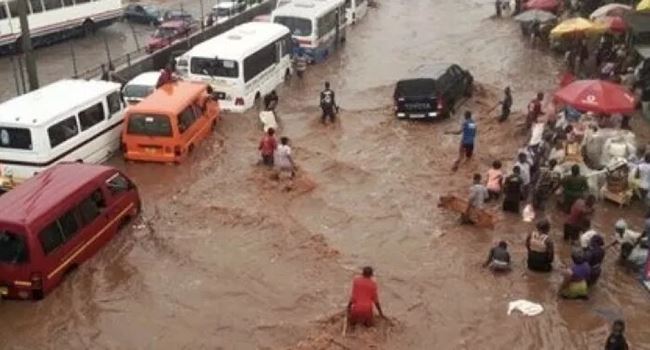News
Half of the world’s population could be exposed to flooding, storms, tsunamis by 2030 ―UN

The United Nations (UN) Secretary-General António Guterres has projected that by the year 2030, about 50 per cent of the world’s population would live in coastal areas, which are exposed to flooding, storms and tsunamis.
In a message to mark the World Tsunami Awareness Day, celebrated every November 5, Guterres called on all countries, international bodies and civil society to increase understanding of the deadly threat and share innovative approaches to reduce risks.
“We can build on the progress achieved, ranging from better outreach to tsunami-exposed communities around the world, to the inclusion of a tsunami programme in the UN Decade of Ocean Science for Sustainable Development”, Guterres said
“Rising sea levels caused by the climate emergency will further exacerbate the destructive power of tsunamis.
“We must limit warming to 1.5 degrees over pre-industrial averages and invest at scale in the resilience of coastal communities.”
Also, the UN chief noted that rapid urbanisation and growing tourism in regions prone to tsunamis were also putting even more people in harm’s way.
“That is why the UN has chosen enhancing international cooperation for developing countries, as the theme of this year’s World Tsunami Awareness Day,“ he said.
Furthermore, Guterres said science, international cooperation, preparedness and early action must be at the centre of all efforts to keep people and communities safer.
He argued that boosting support to developing countries and improving detection and early warning was critical in the face of the increasingly complex global crises
This year, World Tsunami Awareness Day is promoting the “Sendai Seven Campaign,” specifically targeted to enhancing international cooperation to developing countries.
The secretary-general also appealed to stakeholders to deliver on the Sendai Framework and together build resilience against all disasters.
Read also: Flood kills seven, displaces 74,713 people in Adamawa
According to him, tsunamis are rare events but can be extremely deadly.
In the past 100 years, 58 tsunamis have claimed more than 260,000 lives or an average of 4,600 per disaster – more than any other natural hazard.
The highest number of deaths occurred in the Indian Ocean tsunami of December 2004 that caused an estimated 227,000 fatalities across 14 countries and in which Indonesia, Sri Lanka, India and Thailand were the hardest hit.
Just three weeks after the disaster, the international community came together in Kobe, Japan and adopted the 10-year Hyogo Framework for Action, the first comprehensive global agreement on disaster risk reduction.
They also created the Indian Ocean Tsunami Warning and Mitigation System, which uses seismographic and sea-level monitoring stations to send alerts to national tsunami information centres.
After the Hyogo Framework for Action expired in 2014, the world adopted the Sendai Framework for Disaster Risk Reduction 2015 to 2030, outlining seven clear targets and four priorities to prevent and reduce disaster risks.
Join the conversation
Support Ripples Nigeria, hold up solutions journalism
Balanced, fearless journalism driven by data comes at huge financial costs.
As a media platform, we hold leadership accountable and will not trade the right to press freedom and free speech for a piece of cake.
If you like what we do, and are ready to uphold solutions journalism, kindly donate to the Ripples Nigeria cause.
Your support would help to ensure that citizens and institutions continue to have free access to credible and reliable information for societal development.
























